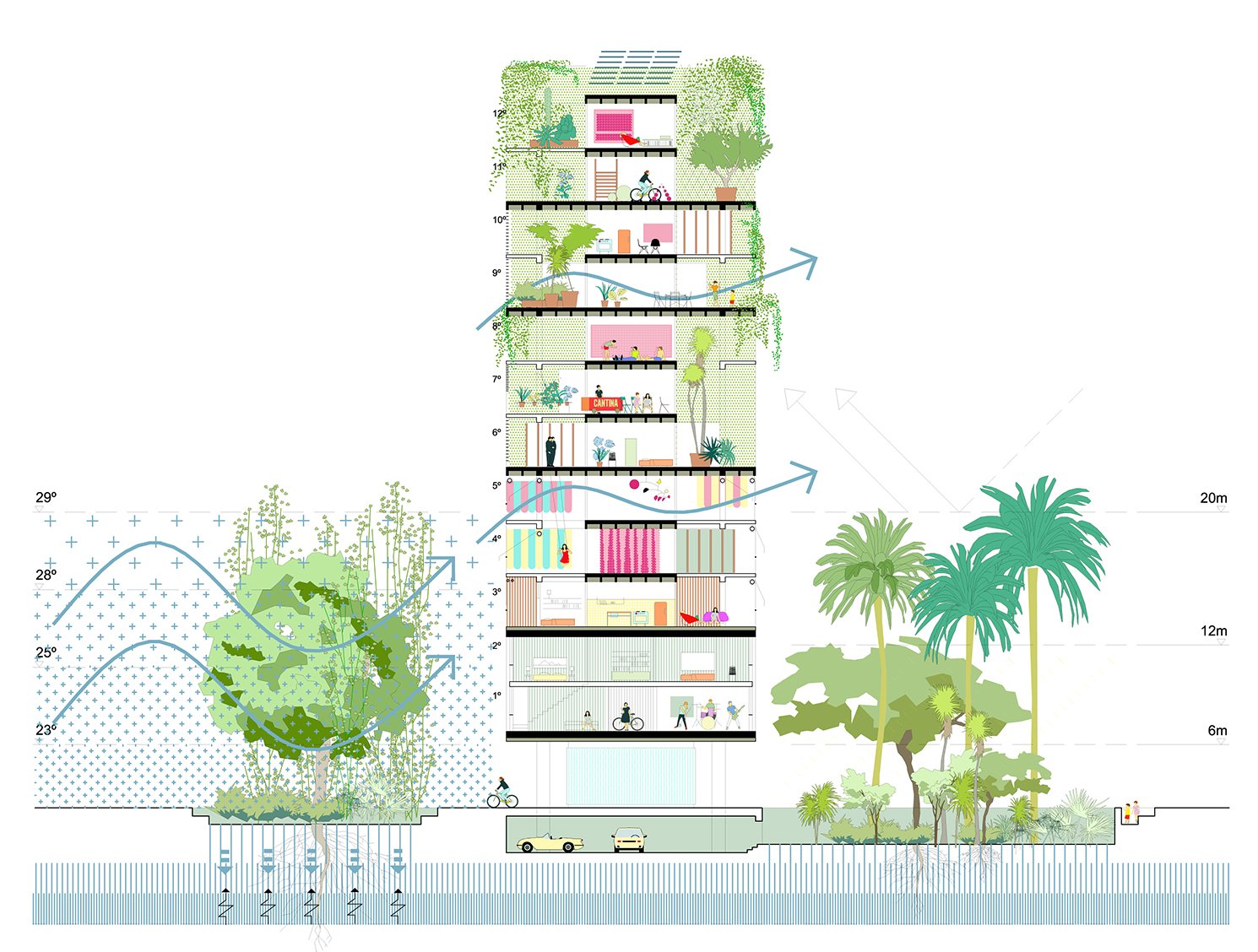
The "Manzana verde" is a new mixed-use district in a former industrial area in the city of Málaga in southern Spain that is being constructed following sustainability and social cohesion principles. In 2017, the city of Málaga in Southern Spain published an architectural innovation contest focused on creating accessible green spaces to increase social cohesion and local biodiversity while contributing to climate mitigation and adaptation. In 2019, winning architectural firms were awarded the project. The construction is based on four urban and social vectors: urban complexity, urban metabolism, urban biodiversity and social cohesion, habitability of the public space and sustainable mobility. Configured as a polygon of more than 90,000 square meters, the district builds on elements of the traditional Mediterranean city. This means that the district will be compact in construction, complex in the mix of uses, and close to basic citizen services, incorporating resources saving and efficiency systems. As an eco-neighborhood, the 'Manzana verde" disctrict will use ecological certification criteria in the treatment of materials and waste originating from earthworks, urbanization of land and construction, contributing to the creation of a circular economy.
